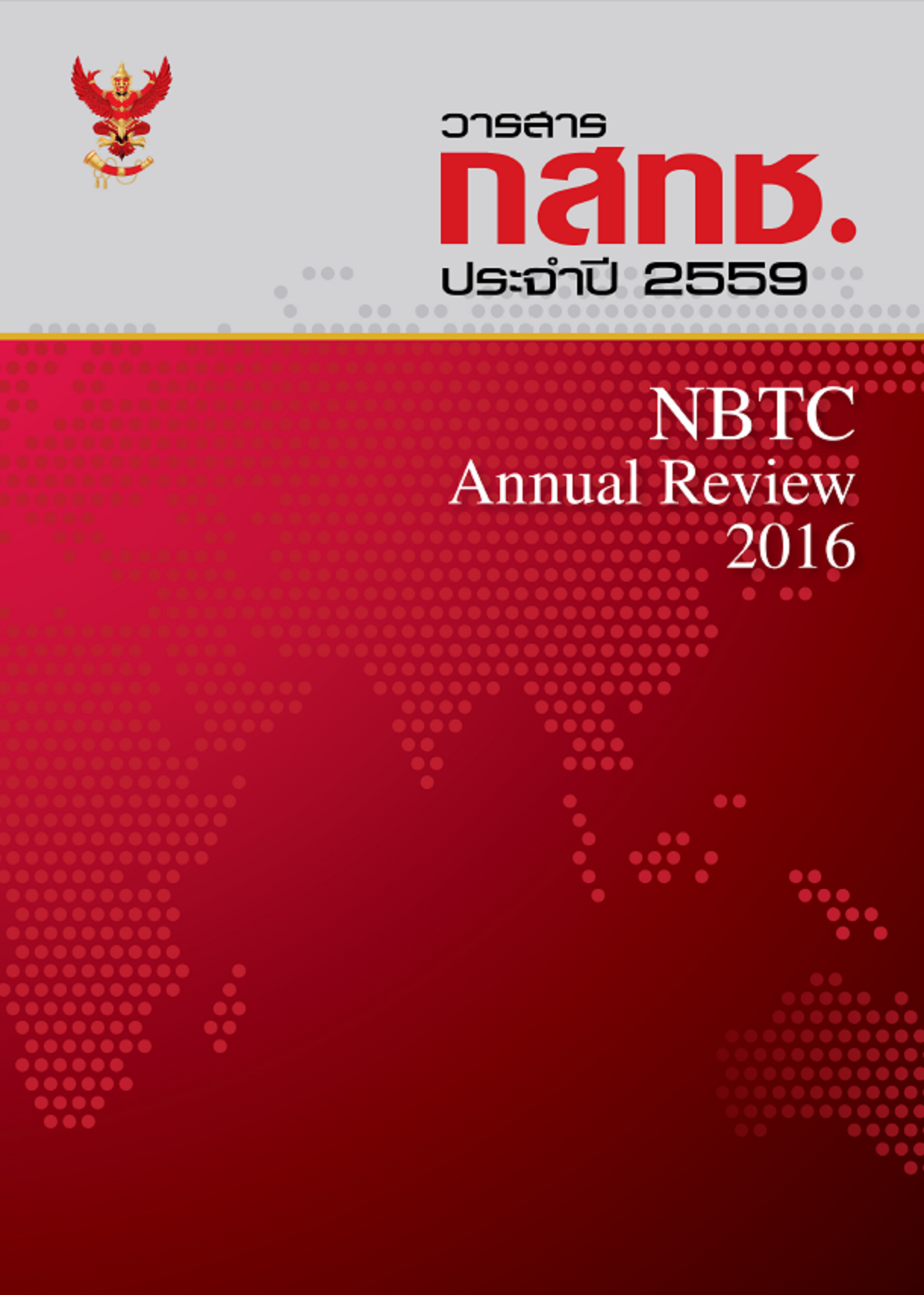การบริหารจัดการคลื่นความถี่
Abstract
This article comprehends research work on spectrum management both from the authors themselves and others, and also related update information. It is known that we can enhance the efficiency of spectrum management in terms of technology and policy. In the first part of this article, new spectrum allocation technologies for efficient broadband communications are discussed. In the latter part, case studies on spectrum management policies in Thailand and aboard are revealed as well as our suggestions and solution on spectrum management policy.
References
Andrews J.G. (2014). What will 5G be?. IEEE Journal on Selected Areas in Communications, 32, 6, 1065-1082.
Sedtheetorn P., and Chulajata T. (2016). Spectral efficiency evaluation for non-orthogonal multiple access in Rayleigh fading. IEEE proceedings of ICACT, 747-750.
Sedtheetorn P., and Chulajata T. (2016). Uplink spectral efficiency for non-orthogonal multiple access in Rayleigh fading. IEEE proceedings of ICACT, 751-754.
NTT Docomo Inc. (2014). 5G radio access: requirements, concept and technologies. Docomo 5G white paper.
รัฐพล ศรุติรัตนวรกุล. (2558). การบริหารจัดการคลื่นความถี่. เอกสารประกอบการสอนรายวิชา การสื่อสารคอนเวอร์เจนซ์ หลักสูตรวิศวกรรมศาสตรมหาบัณฑิต สาขาวิชาสถาปัตยกรรมการจัดการองค์กร มหาวิทยาลัยมหิดล
สุพจน์ เธียรวุฒิ. (2558). กสทช. กับการจัดสรรคลื่นความถี่ในกิจการโทรคมนาคม บทความออนไลน์ทางเว็บไซด์ https://supott.wordpress.com/2016/05/26/nbtc-and-spectrum-allocation/
Downloads
Published
How to Cite
Issue
Section
License
The Office of the NBTC holds the copyright of articles appearing in the journal. The Office of the NBTC allows the public or individuals to distribute, copy, or republish the work under a Creative Commons license (CC), with attribution (BY), No Derivatives (ND) and NonCommercial (NC); unless written permission is received from the Office of the NBTC.
Text, tables, and figures that appear in articles accepted for publication in this journal are personal opinion and responsibility of the author, and not binding on the NBTC and the Office of the NBTC. In case of errors, each author is solely responsible for their own article, and not concerning the NBTC and the NBTC Office in any way.



